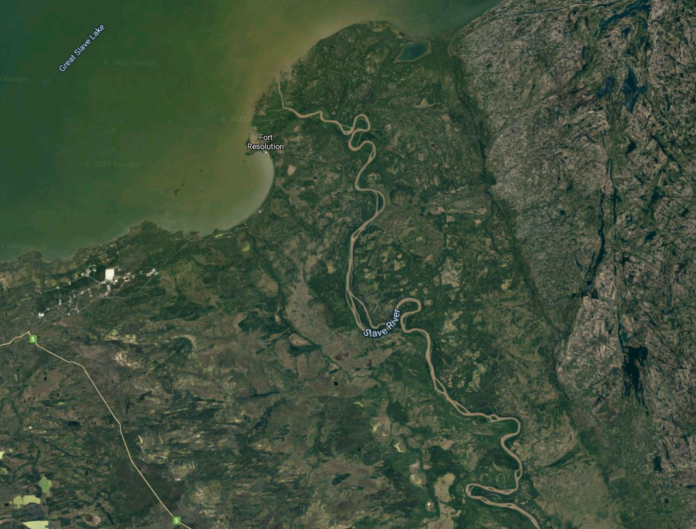Areas around the Taltson River are flooding, after a summer with high rain and water levels.
Arthur Beck, a local trapper, shared photos of a trapper cabin on shore near the river, with water levels that had risen several feet above the doorways of the cabin and frozen.
“All the Taltson River trappers trapping equipment is under ice right now. All the beavers lodge and muskrat home have been flooded, they are drowned. No place to go. So sad, my friends. We need help please,” he posted on Facebook.
This is down Taltson River 70 miles below the dam. They let water out 3 times October. November. December 2020 the…
Posted by Arthur Beck on Thursday, 21 January 2021
The Yellowknife area saw its third wettest summer on record this past year, with other communities throughout the territory experiencing wet summers.
The Taltson River, which flows through the Talton Hydroelectric dam, south of Great Slave Lake, typically sees 215 cubic metres per second, according to Environment and Natural Resources (ENR) spokesperson Darren Campbell.
As of Nov. 12, the water flow was recorded as 628 cubic metres per second, nearly triple the average. Those numbers have since dropped, but still remain significantly higher than the average
Another river, the Tazin River, which flows into the tributary to the Taltson River, were more than six times higher than average in October 2020, reporting at 372 cubic metres per second (m3/s) versus an average of 60 m3/s.
But the dam has not had an impact on the flooding, according to Doug Pendergast, a spokesperson for Northwest Territories Power Corporation, who operate the dam.
“Water levels in lakes, rivers and streams throughout the NWT have been higher than normal over the past year,” Pendergast said in an email. “This has caused land and property damage in a number of communities. High-water levels in the Taltson River are the result of natural river flow and not a result of NTPC’s operations.”
ENR released a statement back in November that warned higher-than-usual water levels could continue into the winter, and could alter water and ice flows. Campbell said there are a number of factors that contribute to water levels and ENR is continuing to collect data.
“These water levels are unprecedented. Rain and snowfall in northern B.C., Alberta and Saskatchewan will be the biggest factors contributing to what water levels will be like in the NWT in future years,” Darren Campbell, Environment and Natural Resources said in an email. “Conditions this spring will depend on existing water levels, the amount of snow in the watershed, how quickly melt occurs and if rainfall occurs during the melt period.”
Campbell adds that ENR staff have travelled to Fort Resolution and the Taltson River to help with the data collection and to also speak with local trappers and land users.
“Hunting and trapping are of the utmost importance to the livelihood of many residents in the region and ENR is committed to gathering further information about the flooding and high water conditions,” he said.
“Staff have met with them to discuss the scope and impact of the flooding, and ENR will continue to support trappers as much as possible as trapping is a vital part of the NWT’s culture and economy.”





